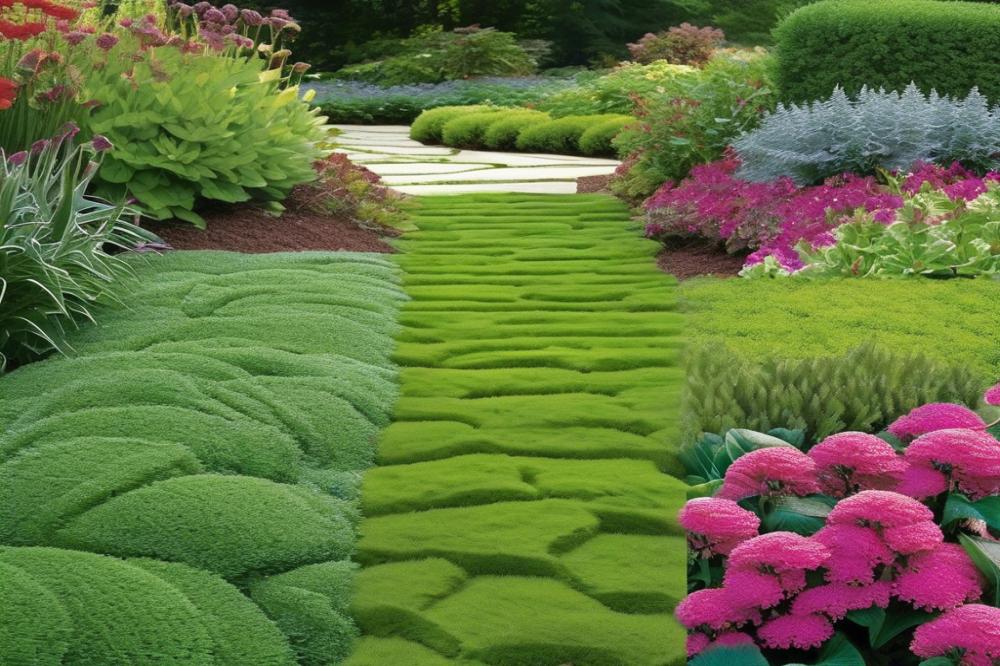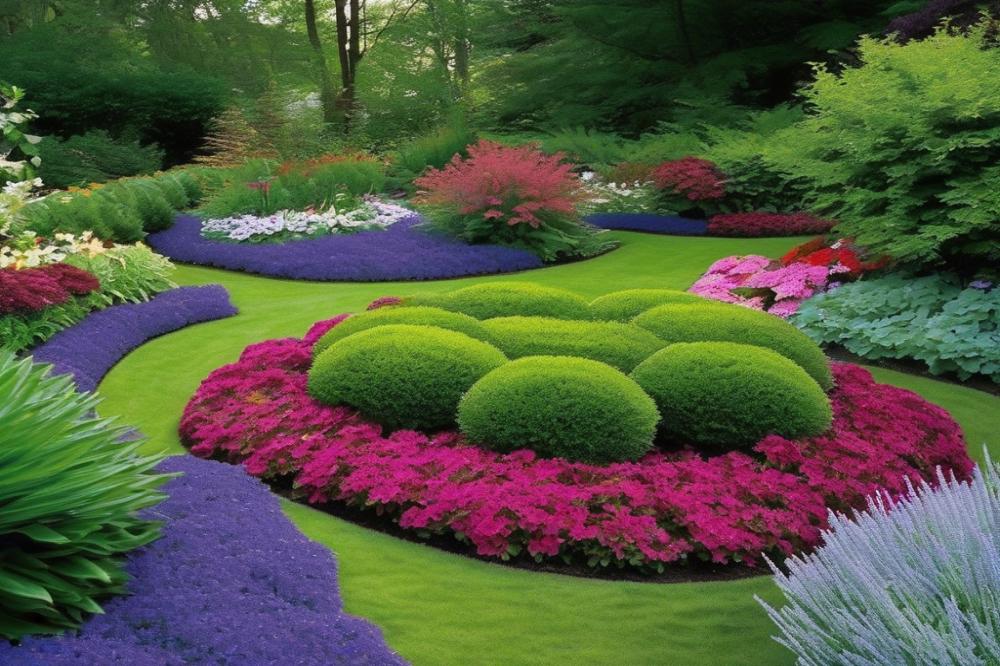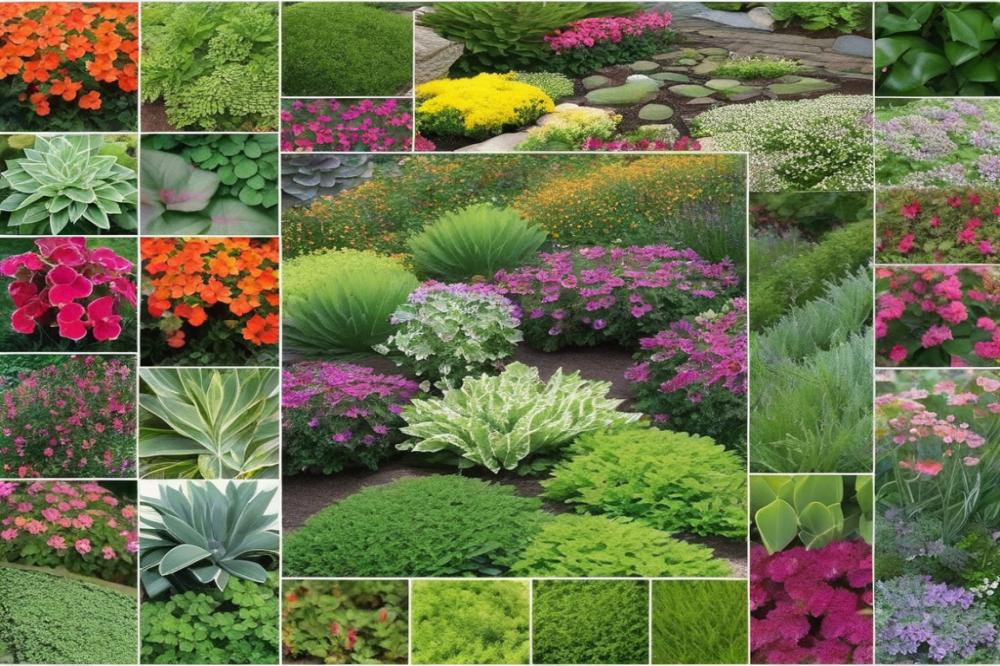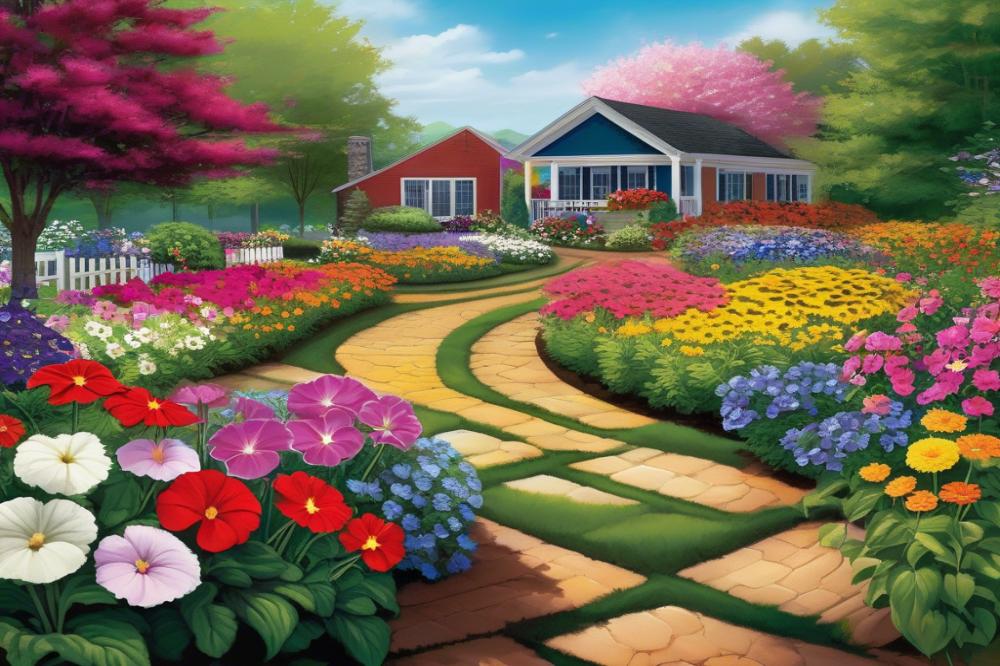Creating landscaping“>pathway edges with ground covers
ground covers play a significant role in landscaping. These low-maintenance plants fill in spaces and provide visual interest. Many gardeners appreciate how they soften the look of garden pathways and enhance outdoor aesthetics.
pathway edges are essential in garden design. They guide the eye and direct movement, making the space feel organized. A well-defined edge can transform a casual path into a defined walkway, adding structure to your garden layout.
Utilizing perennial ground covers for these edges offers several benefits. They help control soil erosion, ensuring the integrity of your pathways. Additionally, these plants require less upkeep than traditional flowers or shrubs, making them a practical choice.
Many creative walkway ideas involve incorporating these plants along the edges. They can fill gaps left by stepping stones or soften the sharp lines of gravel paths. This approach not only beautifies but also enhances the overall experience when walking through the garden.
Incorporating eco-friendly gardening practices is increasingly popular. By choosing native ground covers, you can support local ecosystems while reducing water usage. This is a win-win for both the environment and your garden.
Understanding Ground Covers


Ground covers are low-growing plants that spread across the soil surface, often used in landscaping to enhance outdoor aesthetics. They help to suppress weeds and can provide a lush, green look to garden pathways. These plants can also aid in soil erosion control, making them practical choices for creating edges along walkways.
In terms of types, several varieties perform well as edging plants. Perennial ground covers stand out for their longevity and low-maintenance needs. They thrive in various conditions, allowing for flexibility in garden design. Some popular selections include creeping thyme and sedum. Both offer vibrant colors and can withstand different environmental conditions.
Low-maintenance plants are ideal for many homeowners. These options require less water and attention over time. For busy gardeners, this can mean more enjoyment and less labor. Choosing the right perennial ground covers can make a significant difference in the look and feel of outdoor spaces.
When considering walkway ideas, think about how ground covers can enhance the pathway edges. They create a seamless transition between hard surfaces and natural areas. Consider plants like ajuga or creeping phlox for their beautiful flowers and foliage.
Incorporating these plants into your garden design allows for a unique approach to outdoor aesthetics. They offer different textural contrasts and colors throughout the seasons. This makes garden pathways not only functional but also visually appealing. Additionally, many of these plants support eco-friendly gardening practices by promoting biodiversity and attracting pollinators.
Ultimately, the right choice of ground covers can elevate any outdoor space. Whether for soil erosion control or just adding beauty, these plants are versatile and effective. The key is to select those that align with your garden’s conditions and your personal maintenance preferences.
Selecting the Right Ground Covers for Pathways


When choosing plants for your pathways, various factors come into play. First, consider your climate. Some plants thrive in hot, dry areas, while others prefer cooler, moister conditions. The right selection can enhance your garden pathways and contribute to effective soil erosion control.
Low-maintenance plants are ideal for busy homeowners. They require less water and care, making them perfect for walkways. Look for hardy species that can withstand foot traffic. This approach simplifies your landscaping efforts while keeping your outdoor aesthetics appealing.
Preferred Ground Covers for Specific Climates
In warmer regions, select drought-tolerant options. Succulents or creeping thyme can flourish beautifully without much irrigation. Meanwhile, cooler climates may benefit from lush options like creeping phlox or ajuga. These perennial ground covers add color and vibrancy even in less favorable weather.
Take into account the sun and shade patterns in your yard. Some ground covers need full sunlight while others thrive in shaded areas. Matching your choices to these conditions creates a harmonious garden design.
Combining Different Ground Covers for Visual Interest
Mixing various types of plants adds depth to your garden. Incorporate textures and colors to create a unique look along your pathways. Pair a low-growing plant like blue star creeper with taller edging plants for contrast. This layering makes your outdoor space more dynamic.
Consider using plants that bloom at different times to ensure seasonal interest. A combination of flowering and non-flowering varieties can keep your pathways lively year-round. When planning, think about the maintenance levels needed. Balancing beauty and effort leads to a more enjoyable gardening experience.
Designing Pathway Edges with Ground Covers


Walkway Ideas Involving Ground Covers
Creating appealing edges for garden pathways can enhance any outdoor space. Low-maintenance plants are ideal for this purpose. They fill in gaps, provide greenery, and often require minimal upkeep. Consider using perennial ground covers to create a lush border. They thrive in various conditions and bloom throughout different seasons. Popular choices include creeping thyme or sedum, both of which add charm to walkways while remaining resilient against foot traffic.
Techniques for Creating Distinct Edges
Establishing a clear boundary is essential for a polished look. Begin by choosing appropriate edging plants to define your pathway. The use of stones or bricks can help separate the walking area from the garden. When digging the edge, make sure it is sloped properly to prevent soil erosion. This approach not only looks great but also controls any runoff that might occur during rain. Incorporating mulch around the plants can provide extra support and suppress weeds, making the maintenance process easier.
Using Ground Covers to Enhance Outdoor Aesthetics
Visual appeal is a crucial aspect of garden design. Ground covers offer endless possibilities for improving outdoor aesthetics through various colors and textures. Mixing different species can create an eye-catching display. Additionally, utilizing trailing plants along the edges brings a lovely draping effect. This transformation can significantly elevate the overall experience of the garden, inviting visitors to explore further. Eco-friendly gardening practices can be implemented by choosing native plants to suit the local ecosystem while keeping pathways vibrant year-round.
Benefits of Ground Covers for Pathway Edges
Using low-maintenance plants along pathway edges offers several benefits. One key advantage is soil erosion control. When heavy rains occur, exposed soil can wash away. Ground covers protect this soil with their extensive root systems. These roots help retain moisture and keep the soil in place. This contributes to a healthier garden environment.
Another appealing aspect is eco-friendly gardening practices. Ground covers require less water compared to traditional lawns. They can thrive in various conditions, requiring minimal upkeep. By choosing perennial options, gardeners promote sustainability. Many of these plants provide habitat for beneficial insects as well. This attracts pollinators, enhancing the ecosystem in your outdoor space.
Aesthetically, edging plants offer charm to garden pathways. They create smooth transitions between different areas of your landscape. This enhances outdoor aesthetics and provides a cohesive look throughout the yard. Various walkway ideas, such as creeping thyme or moss, add a unique texture. Select ground covers that complement your design style for maximum appeal.
In addition, ground covers contribute to overall landscape health. Dense foliage suppresses weeds, limiting their growth in garden pathways. This reduces the need for chemical herbicides, promoting a safer environment. Healthier soil translates into vibrant plants that thrive over time. Thus, using ground covers effectively elevates the garden design.
Maintaining Ground Covers Along Pathways
Care tips for healthy ground covers involve regular attention and practical methods. Incorporating low-maintenance plants reduces the need for excessive labor. When selecting perennial ground covers, choose varieties that thrive in your region. Not all plants can withstand foot traffic, so pick wisely to prevent wear and tear.
Managing Growth to Preserve Pathway Aesthetics
Trimming any overgrowth is essential for keeping edges neat. Plants that spread too widely can encroach on walkways, creating hazards. Monitor the edges of your garden pathways often. Clearing debris like fallen leaves helps maintain beauty and prevents unwanted growth. If you notice seams of growth appearing, prune regularly to shape these edging plants properly.
Seasonal Considerations for Maintenance
Every season brings unique challenges. In spring, fresh growth may require more frequent pruning. Summer heat can lead to drought stress, so mulching can protect soil moisture. During autumn, falling leaves could suffocate your plants, hindering their health. Winter months require different attention; some ground covers may need extra insulation against frost. Ensuring proper care year-round enhances your outdoor aesthetics.
Wrapping Up Your Pathway Edges with Ground Covers
Using low-growing plants along pathway edges offers many benefits. They help prevent soil erosion and suppress weeds, making maintenance easier. These plants add texture and vibrancy, transforming dull walkways into inviting routes. A colorful border can create a striking contrast against hard surfaces like gravel or stone.
Encourage creativity when selecting plants for your project. Consider options like thyme or creeping phlox. Each kind brings its own charm to the garden design. Look at local climates and soil types to find the best choices for your area. Mixing different types can produce a dynamic look, ensuring an engaging landscape.
Keep these ideas in mind as you enhance your garden. Simple changes can lead to beautiful results. Adding lush, living edges not only elevates aesthetics but also improves functionality. A well-planned design can invite visitors and make each path a delightful experience. Embrace this practical yet artistic approach, and watch your outdoor spaces flourish.



